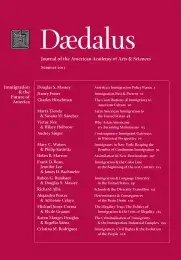Assimilation in New Destinations
This article outlines a long-term research agenda on immigrant assimilation by calling on scholars to be more explicit about how we model and measure assimilation, and to move away from previously aspatial approaches to the topic. After briefly overviewing the field, I draw on original qualitative data from a new immigrant destination region to highlight several places where I believe we scholars can better clarify definitions of and assumptions about assimilation, as well as choices about and interpretations of our data, to foster transparency and facilitate scholarly discovery. I conclude by arguing that scholars working in new immigrant destinations are well poised to examine how legal status – a key structural feature of the context of reception in a host society or locale – shapes assimilation processes and outcomes.
The geographic dispersal of immigrants away from traditional immigrant settlement areas toward an array of new and nontraditional settlement areas has been one of the most surprising trends in recent American immigration patterns.1 By definition, new destinations are places with little previous experience receiving immigrants. Some, especially in the West and Midwest, are more accurately classified as reemerging destinations, since they harbored large shares of immigrants in the early twentieth century, but saw those shares dwindle by the 1970s, before the forces of geographic dispersal again began to pick up. Other destinations, especially in the South, had little experience receiving European, Asian, or Mexican immigrants at the turn of the twentieth century, and so can be considered true emerging areas of immigrant settlement.2
This article is a discussion of both immigrant assimilation in these new destinations and the study of immigrant assimilation itself. For the twin purposes of encouraging transparency and developing a stronger spatial lens within the field, I highlight several areas where I believe we scholars can better clarify definitions of and assumptions about assimilation, as well as choices about and interpre- . . .
